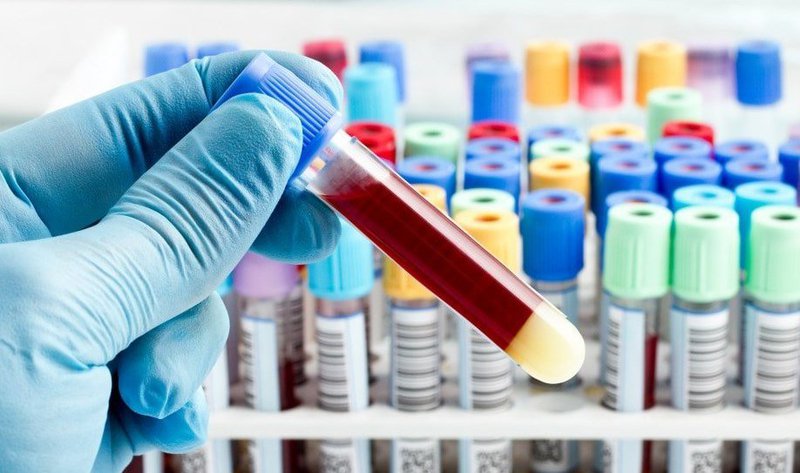Vertebral vascular injury surgery
This is an automatically translated article.
Surgical treatment of vertebral vessel injuries is a method of treating a few rare vascular diseases in clinical practice, in which typically vertebral artery injuries or diseases related to the vertebral arteries . Because this is a group of serious diseases and it is difficult to stop bleeding in these locations, the treatment of vertebral artery wounds is very complicated and has very high potential for danger.
1. Vertebral vascular injury
Vascular wound is a common type of injury in clinical practice with diverse causes and classifications of vascular wounds. In particular, vertebral vascular injuries are a very rare type of vascular injury and belong to the group of dangerous vascular injuries during surgery. Causes of vascular wounds in general and vertebral vascular injuries in particular can be attributed to a number of traumatic objects such as sharp objects including knives, scissors, glass fragments, bullets, metal the ability to penetrate, due to trauma leading to broken bones causing damage to blood vessels, work accidents, traffic accidents...
Pathologically, vascular injuries can include Some diseases are as follows:

Vết thương mạch máu có thể làm cho lớp nội mạc bị bong
Wounds that cut or break a blood vessel: At this time, the two ends of the artery will constrict, forming a blood clot that blocks the lumen. Lateral vascular wound: When the edge of the vascular wound is wide open, the ability to stop bleeding is greatly reduced. A vascular injury that causes the endothelium to shed. Wound that penetrates arteries and veins. Wound is a spasm of a blood vessel. A number of techniques and tests can help diagnose vascular wounds, especially vertebral artery injuries, which are:
Blood tests, blood biochemistry tests Doppler ultrasound or continuous Doppler ultrasound to investigate the extent of the wound without invasive intervention Angiography is used in cases of bleeding wounds, angiography can be performed by direct puncture or by catheterization. Angiography allows to probe whether the blood vessel is completely broken or not, whether there is a thrombus formation in the lumen, whether the blood vessel is constricted or even if the artery and vein are connected. caused by vascular injury or not...
2. Surgical treatment of vertebral vessel injuries

vết thương ở đốt sống cổ cần phải thực hiện phẫu thuật điều trị vết thương mạch đốt sống để ngăn ngừa biến chứng
For vertebral vascular wounds that are difficult to stop bleeding such as those in the transverse spinous vertebral artery in the cervical vertebrae, it is necessary to perform surgical treatment of the vertebral artery wound for the patient to prevent complications. dangerous symptoms caused by the disease, including lack of blood to the brain.
Some more specific indications for this type of surgery are:
Wounds of vertebral vessels with ongoing bleeding. Injuries to the vertebrae have blood clots forming in the neck, causing symptoms of compression on surrounding organs such as esophageal, tracheal and nerve compression. The vertebral artery wound bleeds too much or causes the patient to have symptoms such as paralysis or damage images on ultrasound and computed tomography. In case the patient is in a deep coma due to lack of blood to the brain, it is not recommended to have surgery to treat the vertebral artery injury.
Before surgery, you need to prepare some steps as follows:

Trước khi phẫu thuật thì cần thực hiện các xét nghiệm máu
For patients to perform necessary tests such as blood test, blood group test, blood clotting function test, urine 10 parameter test, liver and kidney function test, electrolytes , chest x-ray... Inform the patient and the patient's family about the technique to be applied to the patient and the possibilities that may occur after surgery. Surgical treatment of vertebral artery wounds is performed according to a procedure that includes the following steps:
Endotracheal anesthesia on the patient Monitoring blood pressure and measuring the patient's electrocardiogram during the surgery . Insert a urinary catheter in the patient. Place the patient in the supine position, place the pillow directly under the shoulder, give the patient a pillow and tilt the head to face the vertebral artery injury. Make a skin incision along the anterior border of the sternocleidomastoid muscle, which is the path of the carotid artery, or an incision can be made along the wound opening if present. Expose the superior and inferior portions of the injured vertebral artery to hemostasis, this step is usually performed when the vertebral artery wound is located beyond the transverse spine of the cervical spine. In case of vertebral artery injury located in the transverse spine, it is necessary to use relaxants and hemostatic materials such as Surgicel and Spongel to stop bleeding. Use systemic anticoagulant Heparin at a dose of 50-100 IU/kg. Use forceps to clamp the blood vessels above and below the wound, at the same time position the patient with the head low and adjust the blood pressure to 130-140 mmHg. Initiate circulation of damaged blood vessels by direct anastomosis, graft or suture the injured segment using reversible saphenous vein or superficial femoral vein, possibly using the internal femoral artery in the patient. with some cases. Or you can use an artificial circuit to restore broken and damaged blood vessels. If necessary, drainage can be performed. Close the incision in the full sequence of anatomical layers. After finishing surgery, patients need to be monitored for some complications that may occur after surgery to treat vertebral vessel injuries as follows:

Cần sử dụng kháng sinh dự phòng để tránh nhiễm khuẩn sau khi phẫu thuật điều trị vết thương mạch đốt sống
Monitor the patient's vitals after surgery, including heart rate, pulse, temperature and blood pressure. Administer antibiotics to prevent infection. In some cases, blood transfusions or blood substitutes may be used. Monitor for focal neurological and cognitive symptoms in the patient. Use anticoagulant Heparin 6 to 8 hours after surgery. Correct the coagulation problem or re-operate if the patient presents with bleeding, has a large thrombus, and the patient is hemodynamically dysfunctional. After surgery, if the patient has a blood vessel blockage, surgery can restore the blood vessel and adjust the dose of anticoagulant. Some patients may experience serious complications after surgery such as cerebral edema, increased intracranial pressure, and need to be examined by a neurosurgeon and given a reasonable treatment. If the patient has an infection, the sutures can be interrupted intermittently, re-operated or replaced with a silver-coated vessel. Surgical treatment of vertebral vessels is an effective method in the treatment of vertebral vascular wounds that are difficult to stop bleeding. This is a very dangerous disease that can affect the blood supply to the brain, so when there are signs of vertebral artery injury, it is necessary to bring the patient to a medical facility immediately for timely surgery.
Vinmec International General Hospital is a high-quality medical facility in Vietnam with a team of highly qualified medical professionals, well-trained, domestic and foreign, and experienced.
A system of modern and advanced medical equipment, possessing many of the best machines in the world, helping to detect many difficult and dangerous diseases in a short time, supporting the diagnosis and treatment of doctors the most effective. The hospital space is designed according to 5-star hotel standards, giving patients comfort, friendliness and peace of mind.
Please dial HOTLINE for more information or register for an appointment HERE. Download MyVinmec app to make appointments faster and to manage your bookings easily.
SEE MORE
Tests to help evaluate blood clotting, hemostasis First aid for vascular wounds Mistakes in first aid for nosebleeds
This article is written for readers from Sài Gòn, Hà Nội, Hồ Chí Minh, Phú Quốc, Nha Trang, Hạ Long, Hải Phòng, Đà Nẵng.





